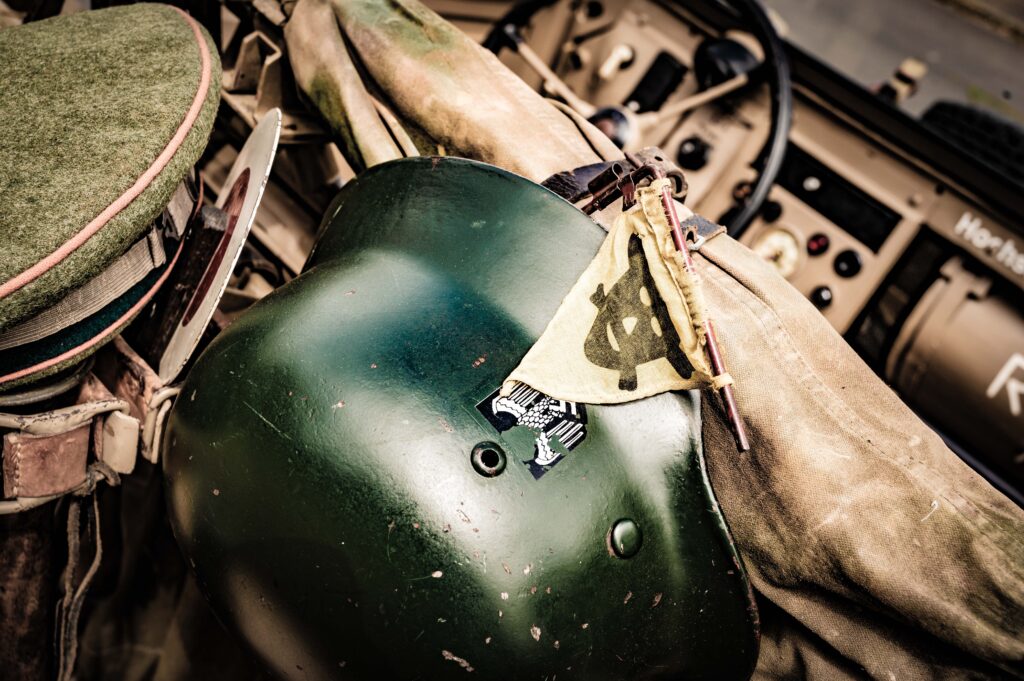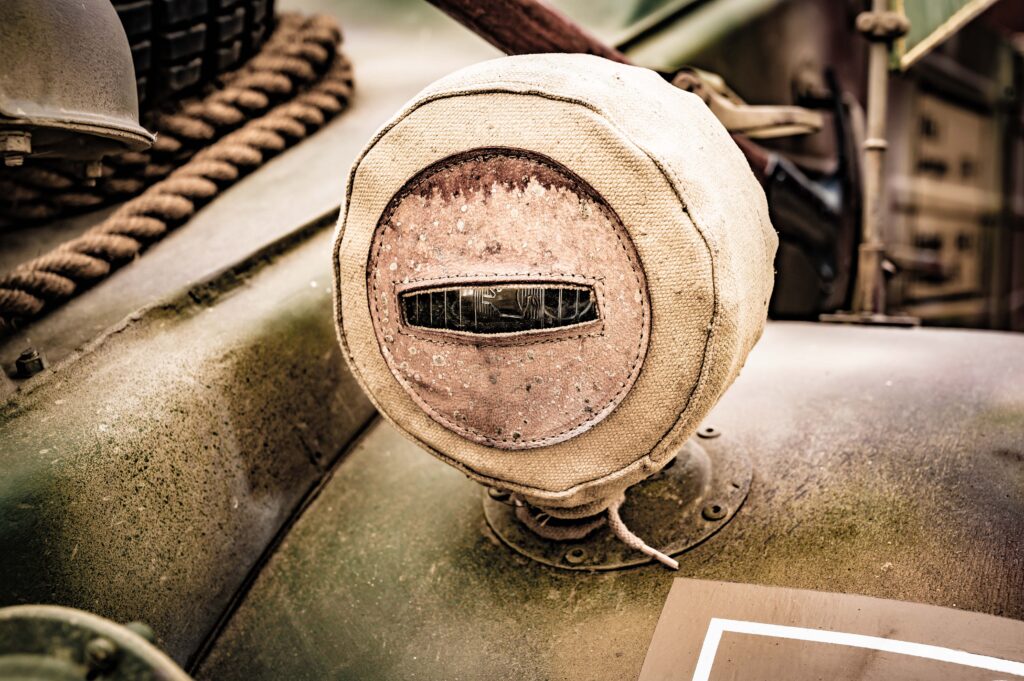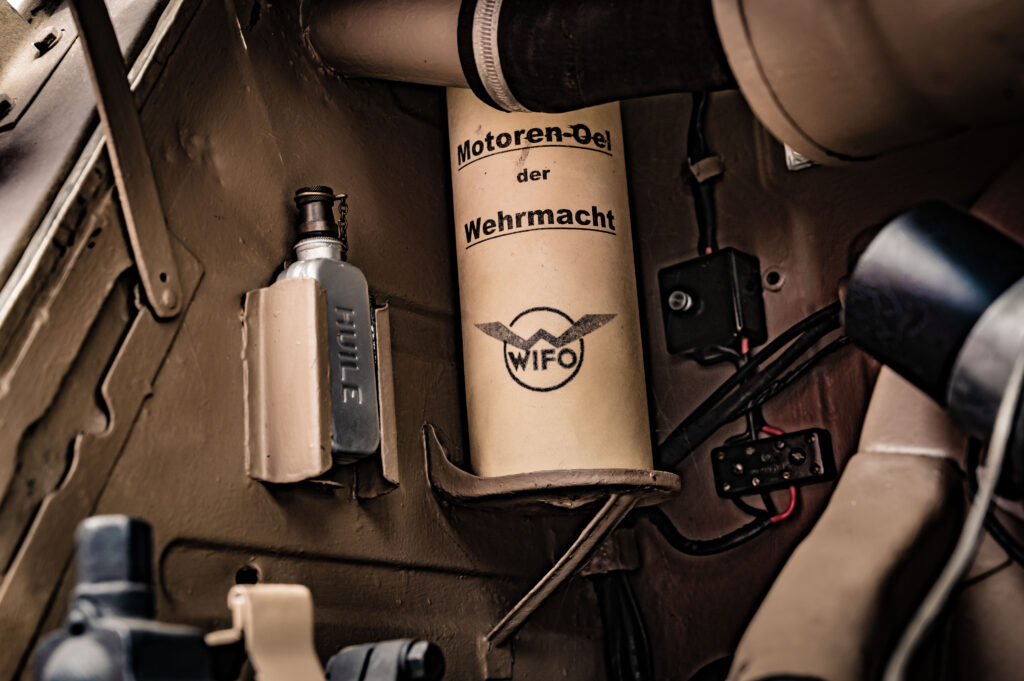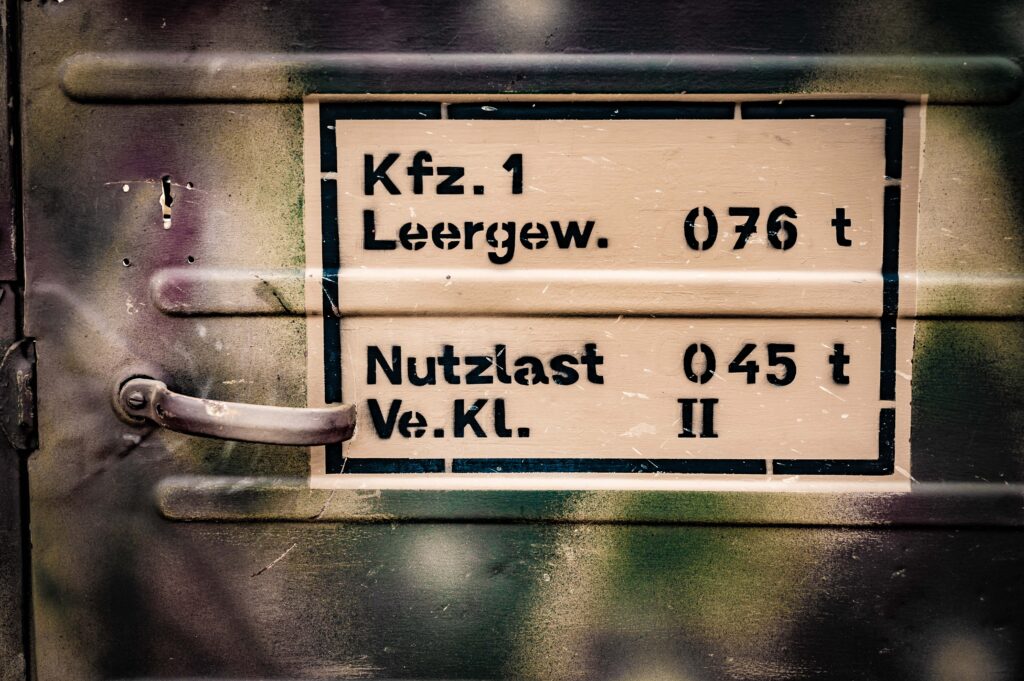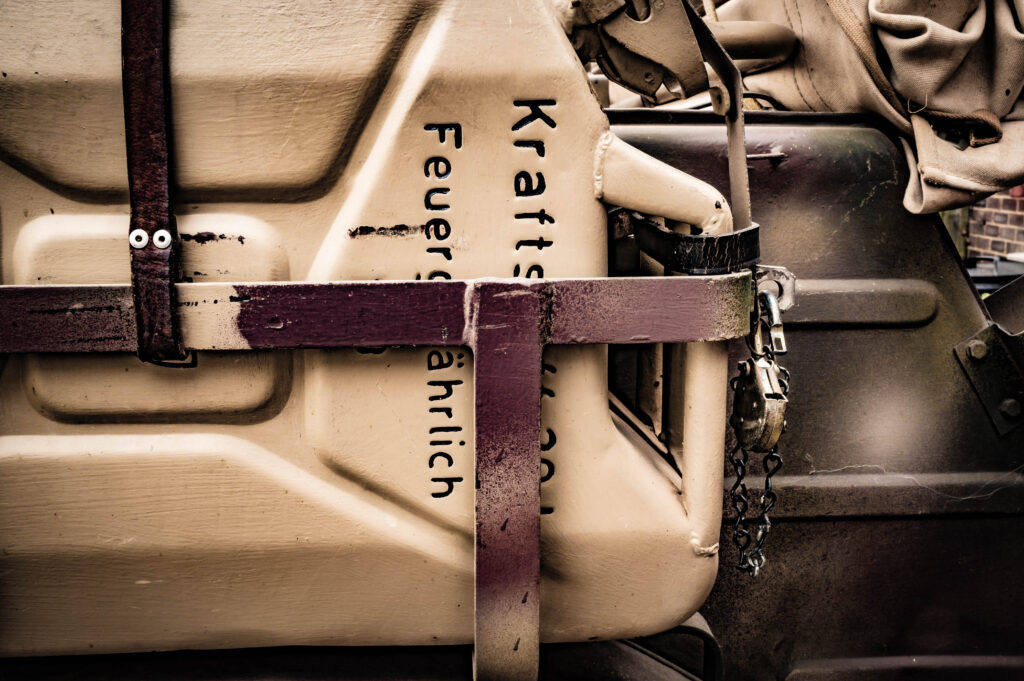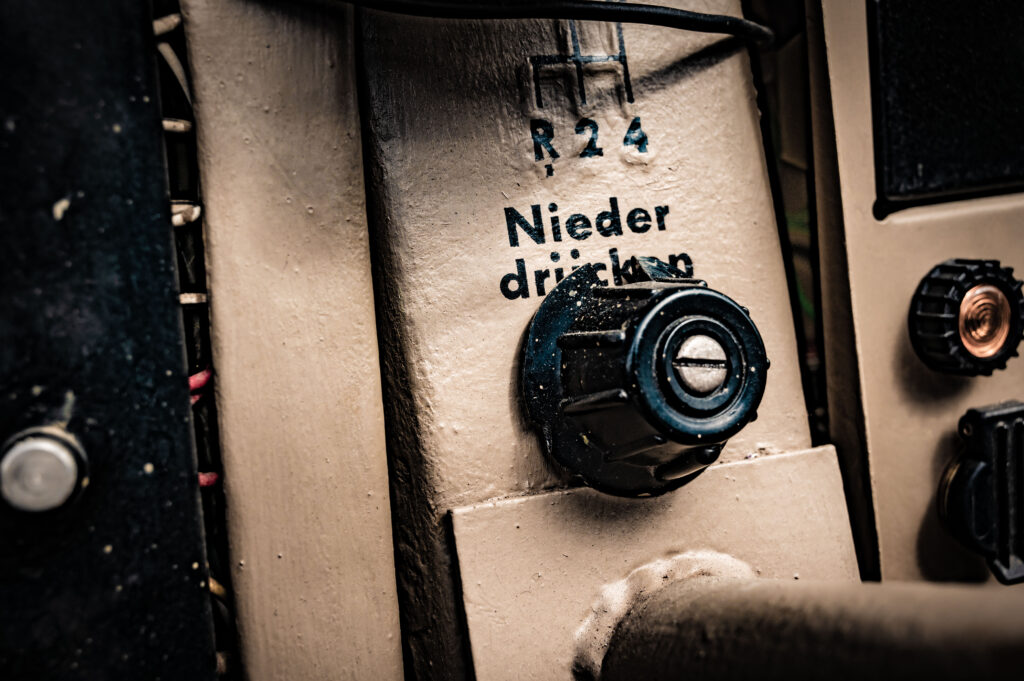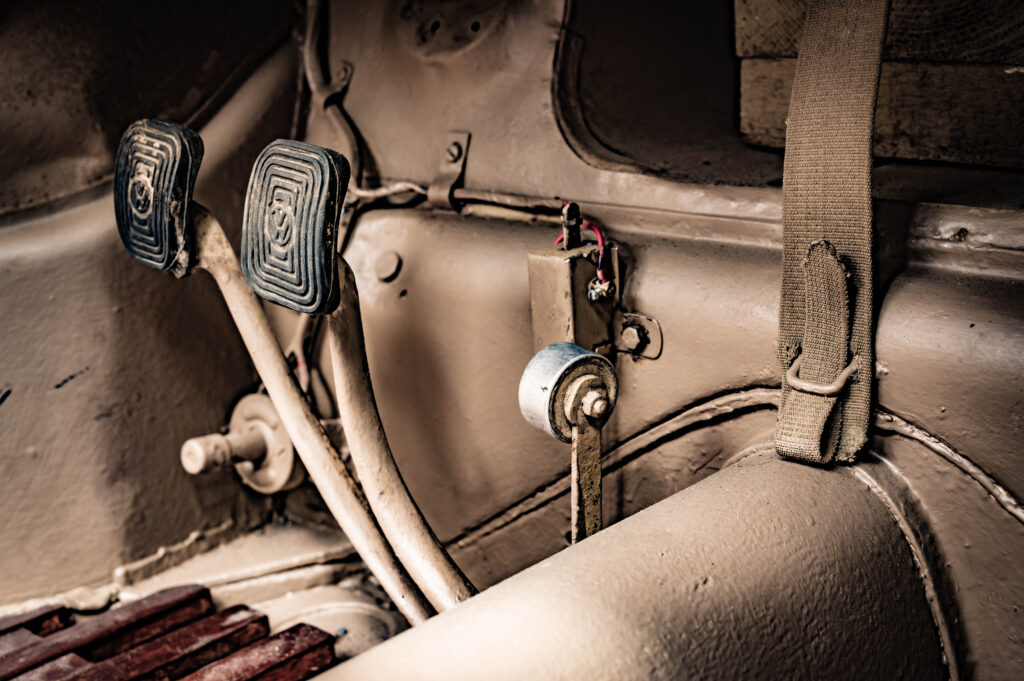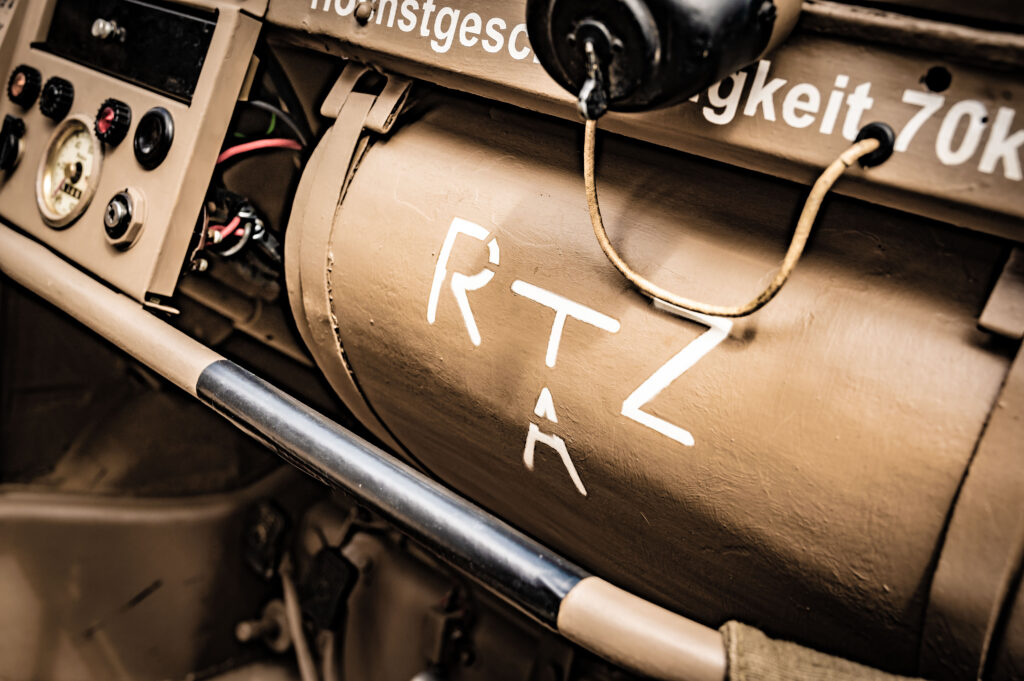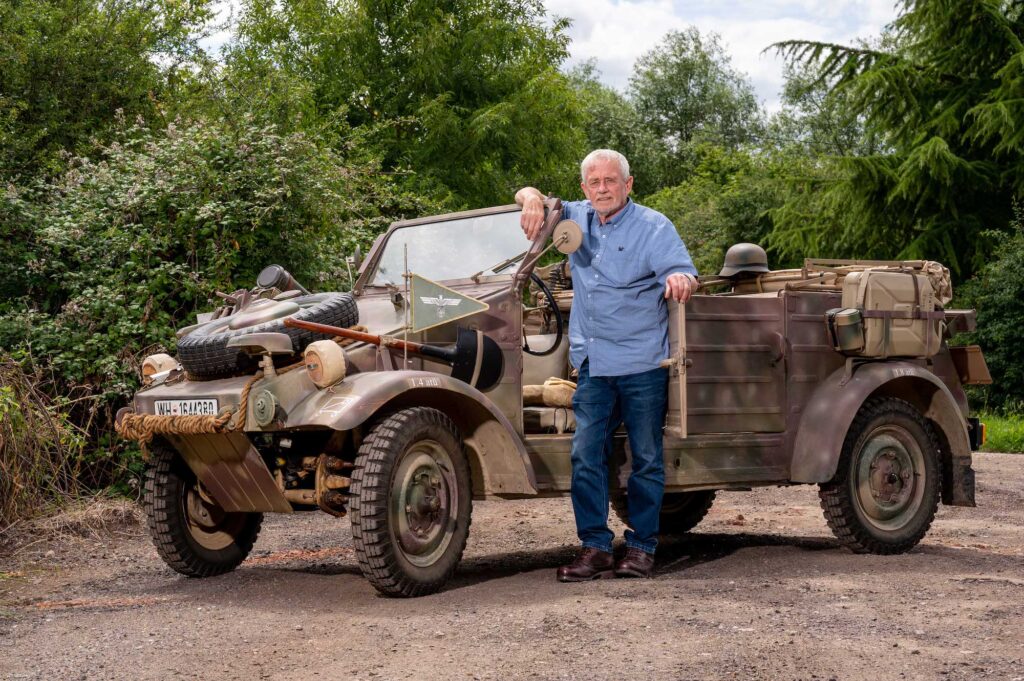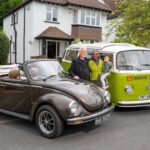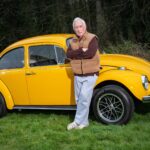As a young boy growing up in post-war Essex, Graham Humphrey always took an interest in military history.
He was no more than eight years old when he first laid eyes on a model kit version of the Volkswagen Kübelwagen, designed by Dr Ferdinand Porsche for the German army and based on the early Beetle.
“I thought ‘that’s a crazy car’,” says Graham, now 74, and the owner of a collection of models of various scales from 1:48 to 1:9 built over the years.
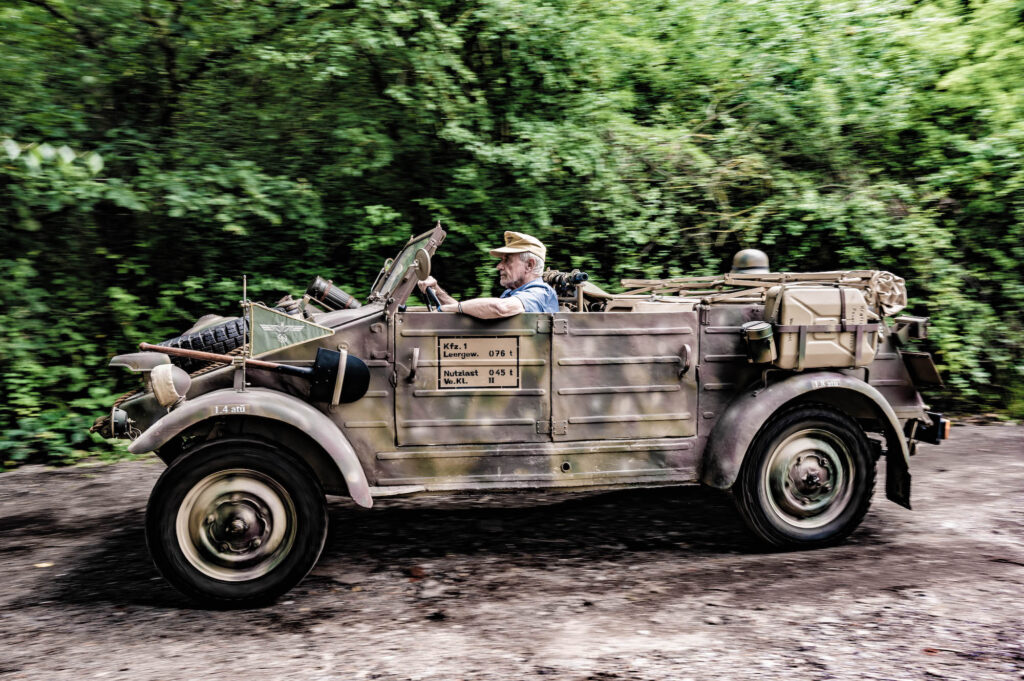
“When I started work, I thought ‘I’d like to get one of those’, and I started looking but it was just impossible to find one. There weren’t any for sale.”
For nearly three decades, Graham had to be content with his models until his search for the real thing finally bore fruit in 1994.
“By keeping my ear to the ground, going to various military shows and letting people know that I was on the lookout for a Kübelwagen, I heard through a friend of a friend that one was available up at Donington,” he says. “It had been shipped over from what was Czechoslovakia.
‘I’ve found one’
“I said to my wife, ‘I’ve found one, I’d like to go and buy it’. I went and had a look at it and it was in the state that you can see in the pictures, but it was an original Kübelwagen.”
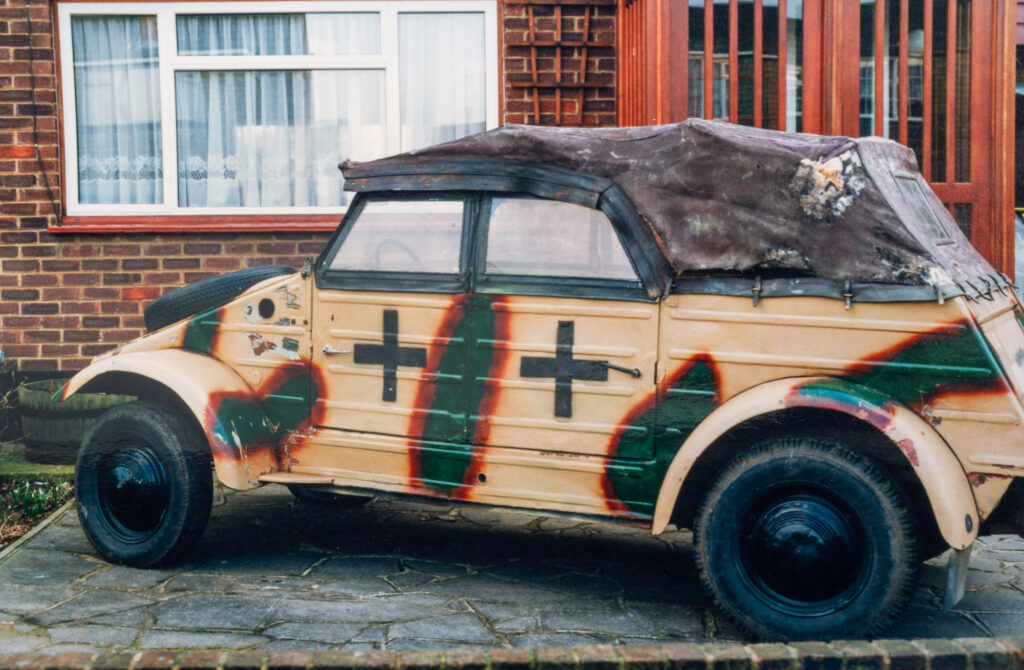
Graham got hold of a trailer, and two weeks later he towed the vehicle home to Benfleet, his wife Janet waiting outside with a video camera to record its long-awaited arrival.
“She hadn’t actually seen it at that point, and the camera dropped down and she said ‘oh my good God, what’s that?’” he laughs.
“I paid £6,250 for it in that condition, and she was shocked at the cost. That’s when the model-making stopped, when I got a 1:1 scale…”
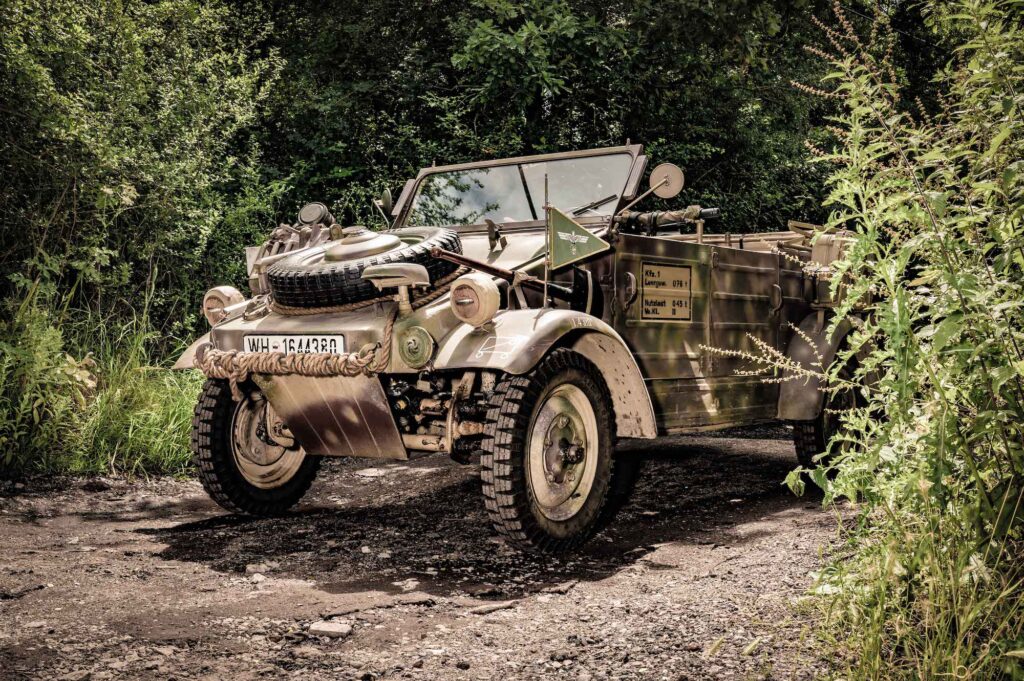
Paperwork from the VW Museum archives show that the vehicle left the Wolfsburg factory on October 20, 1944, from where it would have been delivered to the vehicle depot, Heereszeugamt in Kassel, to receive number plates, unit markings and kit for onward deployment to either the army, navy, or airforce.
Kübelwagen survivor
Life expectancy for the Kübelwagens was about four months, yet Graham’s survived the remaining seven months of the war in Europe.
“Because of its age, it was still in really good condition at the end of the war, and any sort of vehicle in Europe at that time was at a premium because most of them had been destroyed,” he says.
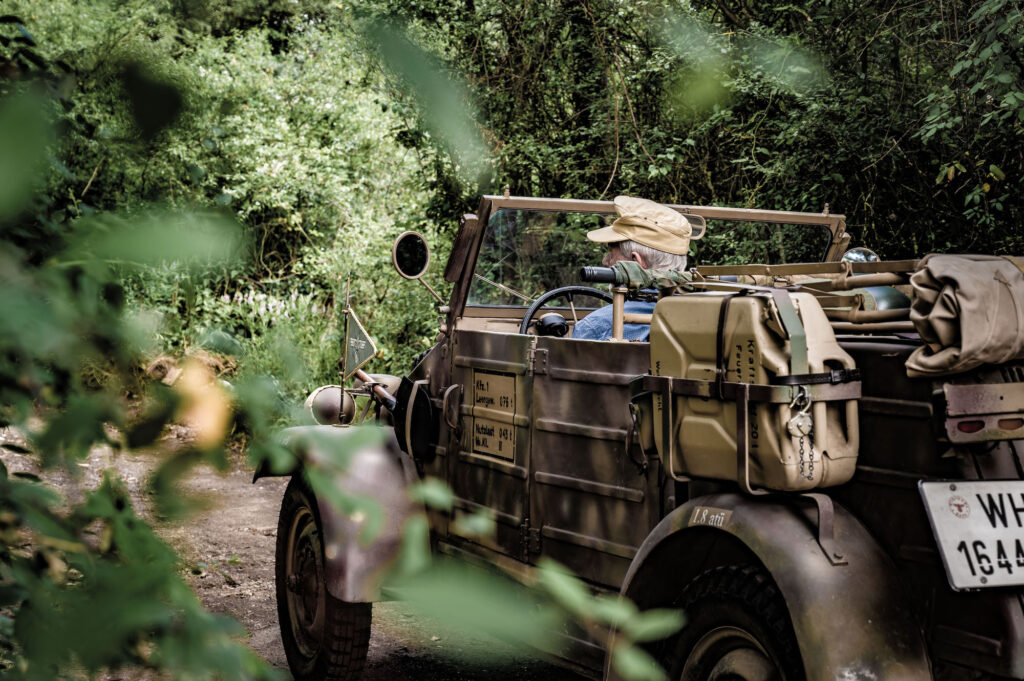
“So these things were being used by civilians and this particular car was given to a doctor in Czechoslovakia in 1945 so he could do his daily rounds.
“He totally demilitarised it and, as I went through the paint, I even found some purple paint at one time. And it had things like door cards. He and his family used it until 1988, when it was tired and in a sorry state.”
From there, the vehicle was taken to the Technik Museum at Sinsheim, but it was never restored and exhibited, instead coming to England and, eventually, to Graham.
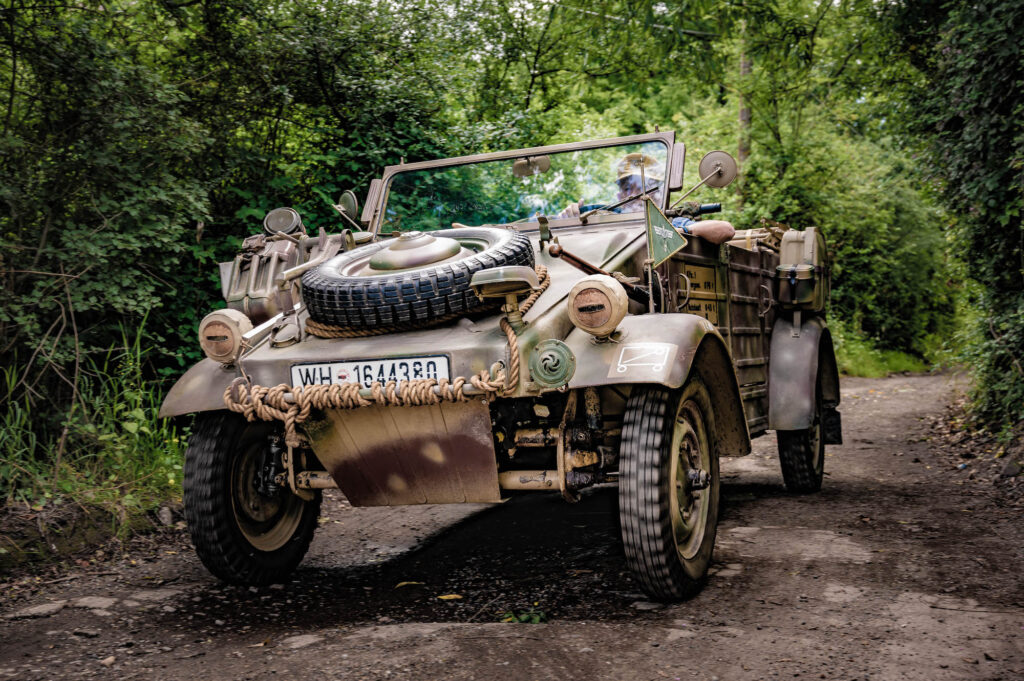
“Everything was missing from it, everything,” he says. “The hood was absolutely rotten, it was in a terrible state, all painted wrong, the wrong 15 inch wheels, and no military equipment at all.
“It took me two years to bring the Kübel back to roadworthy and military condition.”
Volkswagen Kübelwagen: brief history
The Kübelwagen is a direct descendant of the original People’s Car, the Volkswagen Type 1 (Beetle) that Adolf Hitler wanted every German worker to own within 10 years of production starting.
Only a handful of Beetles were manufactured before the outbreak of war, the Wolfsburg factory for which Hitler had laid the cornerstone in 1938 given over to producing military equipment – including the Kübelwagen and its amphibious Schwimmwagen sibling.
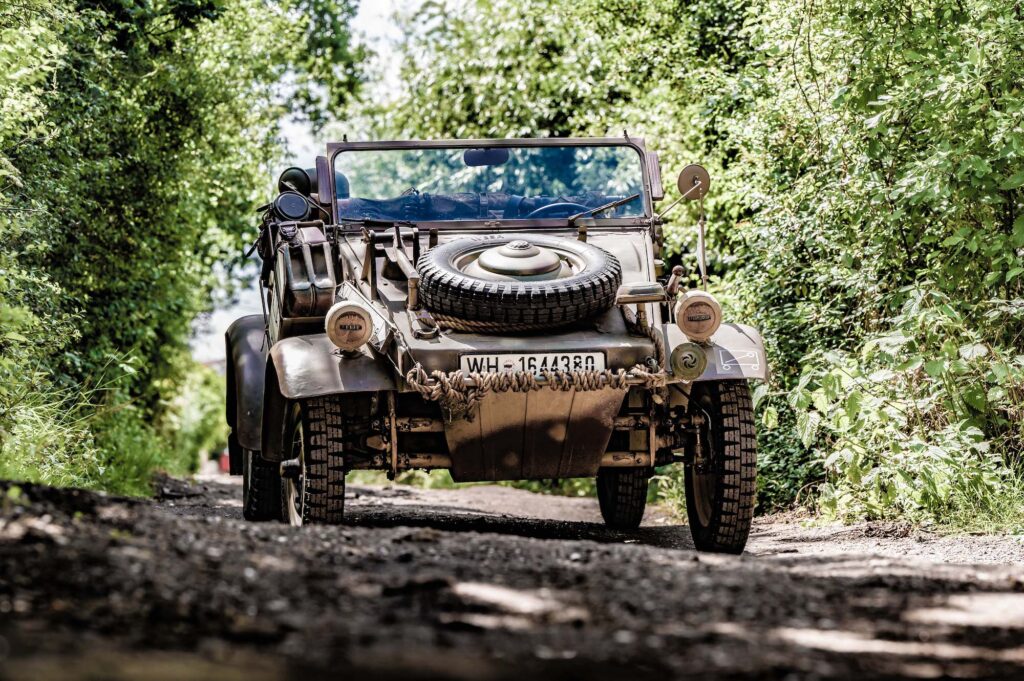
The name is a contraction of the original Kübelsitzwagen – or ‘bucket-seat car’ – referring to the seating employed to prevent occupants falling out of the open-sided, door-less vehicles in the absence of seat belts.
Porsche was given the go ahead to develop a military version of the Volkswagen Type 1 in January 1938, with a brief to develop a vehicle of no more than 950kg with four passengers.
Originally designated the Type 62, the rear-engined, rear-wheel drive vehicle proved adept in testing in Poland, its light weight and high ground clearance negating the need for four-wheel-drive.
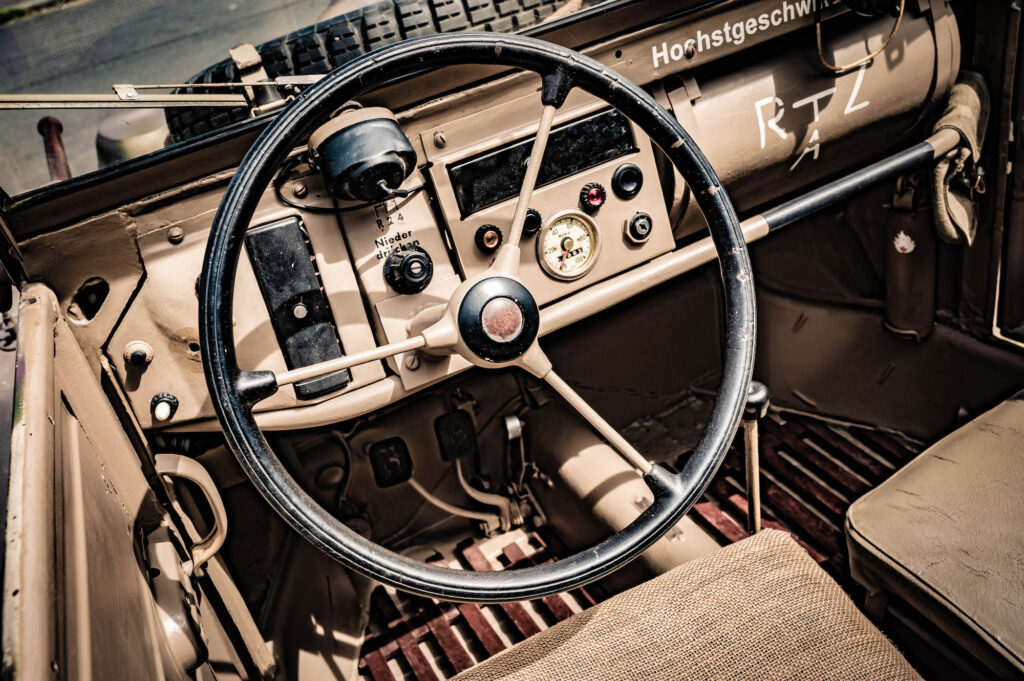
“The Americans evaluated the car and said it was rubbish, but they were brilliant in the snow, and the mud,” says Graham, “and they were used everywhere – in Russia, Italy (where the mud and rain were terrible), and in the desert.
“Because there’s nothing underneath that car, it’s like a sledge – so once it gets into the ruts of other vehicles it will just travel over the top of the mud. And if it does get stuck, it’s got grab rails front and rear and four guys can lift the thing out.”
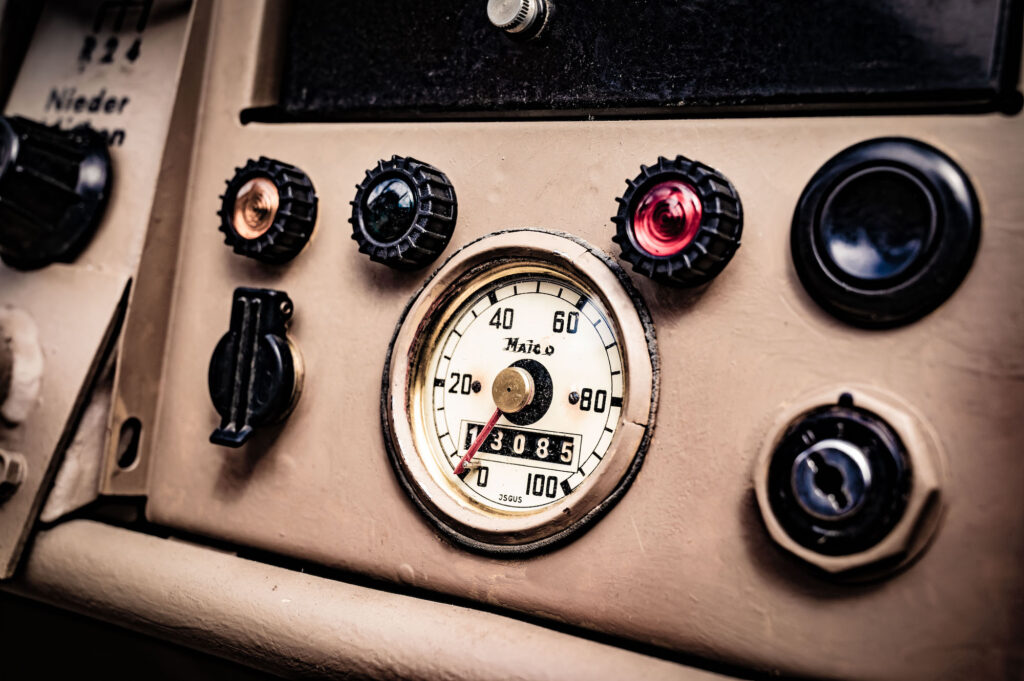
The Type 62 became the Type 82 in 1940, with improvements including larger wheels, a reduction in minimum speed from 5mph to 2.5mph to match the marching pace of soldiers, greater ground clearance, and a limited-slip differential.
Kübelwagens fulfilled a multitude of roles, including staff cars for generals, radio cars, munitions and provisions vehicles, and ambulances with a stretcher running across the top.
Kübelwagen restoration
When Graham got his Kübel home, he set about stripping it down, armed with 10mm and 13mm spanners to remove all the panels and doors from the body, before rubbing it all down to bare metal and painting it in red oxide.
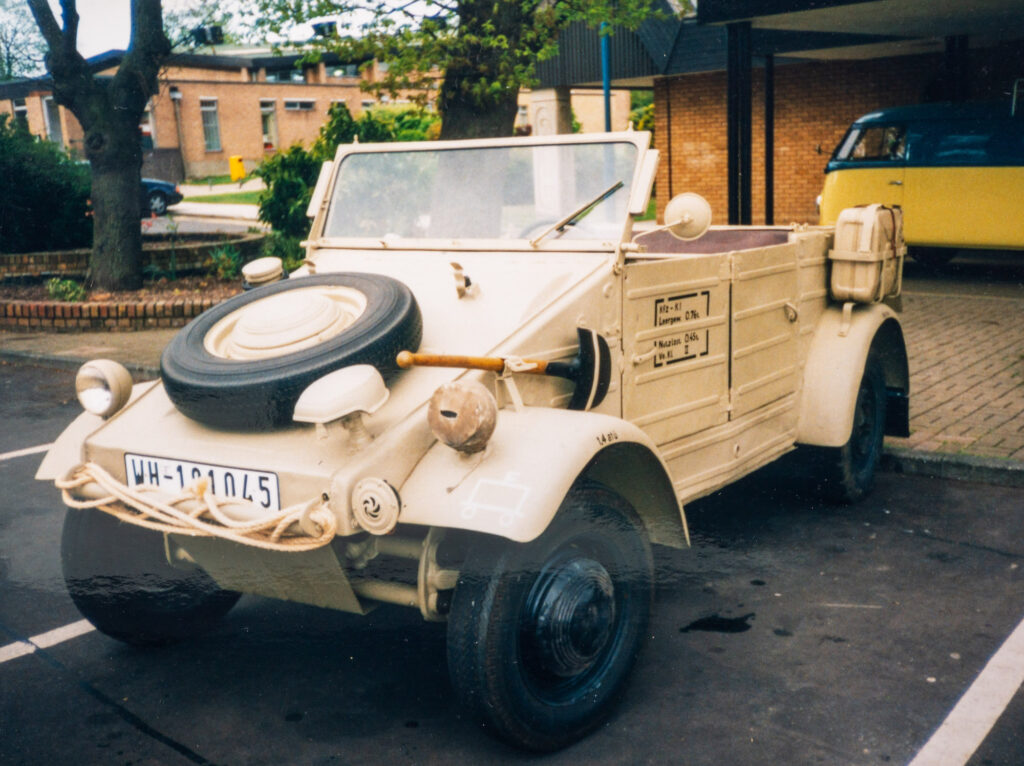
After an attempt at rewiring – the original wiring was well past its best – Graham got someone in to help, and also had the original cable brakes rebuilt.
“It’s funny, when I took it for an MoT for my own peace of mind, he put it on the rolling road and said ‘who drives this car?’ I said it was only me, and he said ‘so you know how bad the brakes are then’.
“And they are, but they are up to their 1944 standard and specification. I can’t improve on them except if I convert them to hydraulics, and I don’t want to do that.
“I’ve also retained all the original doors with all the dents in. I could buy brand new doors from Czechia, but it wouldn’t look right.”
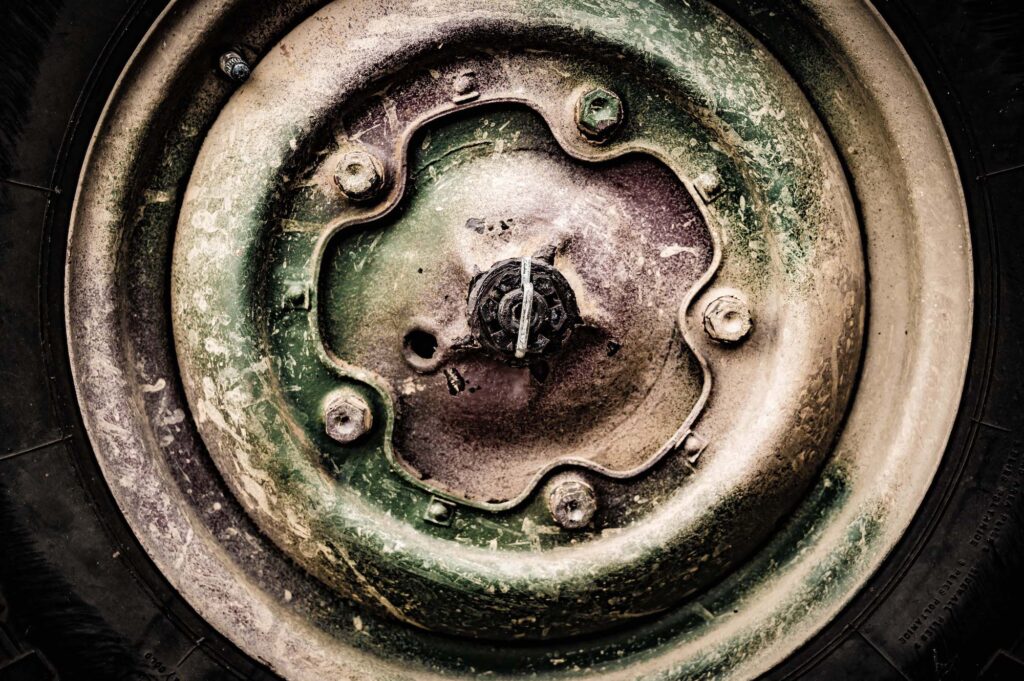
And looking right is all-important for Graham, who served in the Royal Navy as a young man.
“Once I got it on the road, I took it to a local military show at Tilbury Fort, and suddenly I was inundated with all these groups that wanted me to join them for re-enactments,” he remembers.
“So I did that for maybe 20 years, mainly in Kent as far down as Dover Castle.”
Correct period specification
As such, the Volkswagen needed to look the part, in this case that of a German military police unit, which meant that Graham had to source a host of original equipment to bring the Kübelwagen up to the correct period specification.
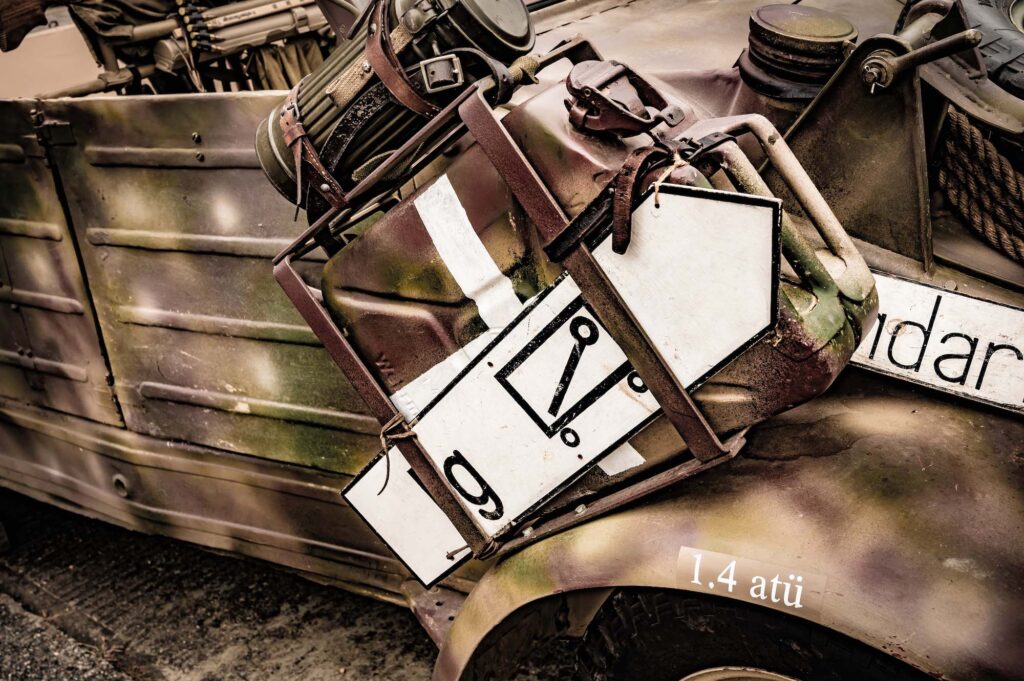
He already had the original, 1131cc, air-cooled engine, which fired up after a few minutes of turning over, filling the garage with grey smoke.
Then the search was on for the correct wheels and tyres (“a nightmare to get hold of”), a new hood, front tow hooks, a period shovel and bracket, the missing headlights, and the crucial front and rear Notek light system for night driving.
“These cars were great at driving at marching pace, but they needed a system where they couldn’t be seen by enemy aircraft,” says Graham. “So there’s this kind of squashed helmet, beneath which is a backwards bulb that shines on to a reflector, which reflects a beam on to the ground and which can’t be seen from the air.
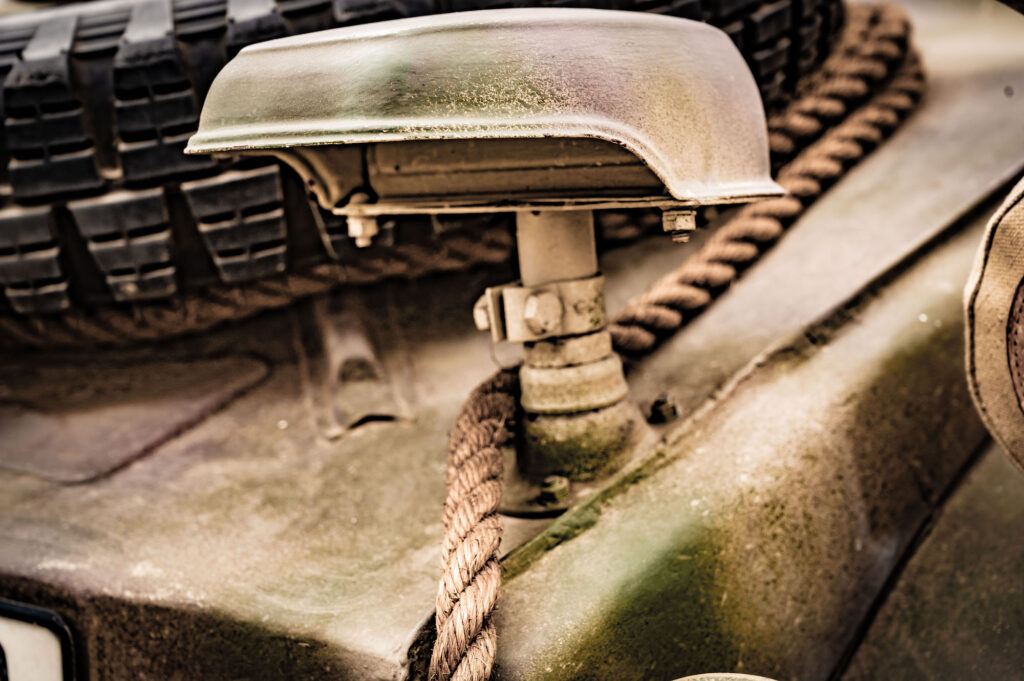
“At the back, there are four reflectors and when you’re the correct distance from the vehicle in front you’ll get two green lights showing up. If you come back too far, you get four lights and, if you’re too close, one light.”
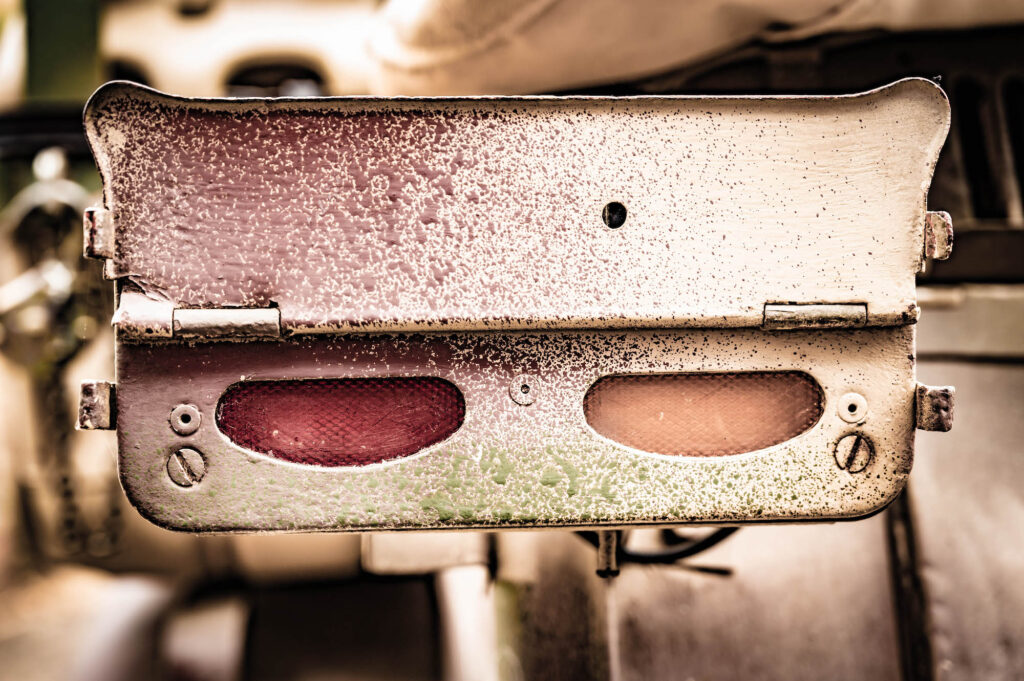
Then there’s the kit and weaponry – an original gas mask case, German helmets, jerry can, hand grenades, a K98k rifle, and a decommissioned MG34 machine gun complete with a 50-round belt of ammunition.
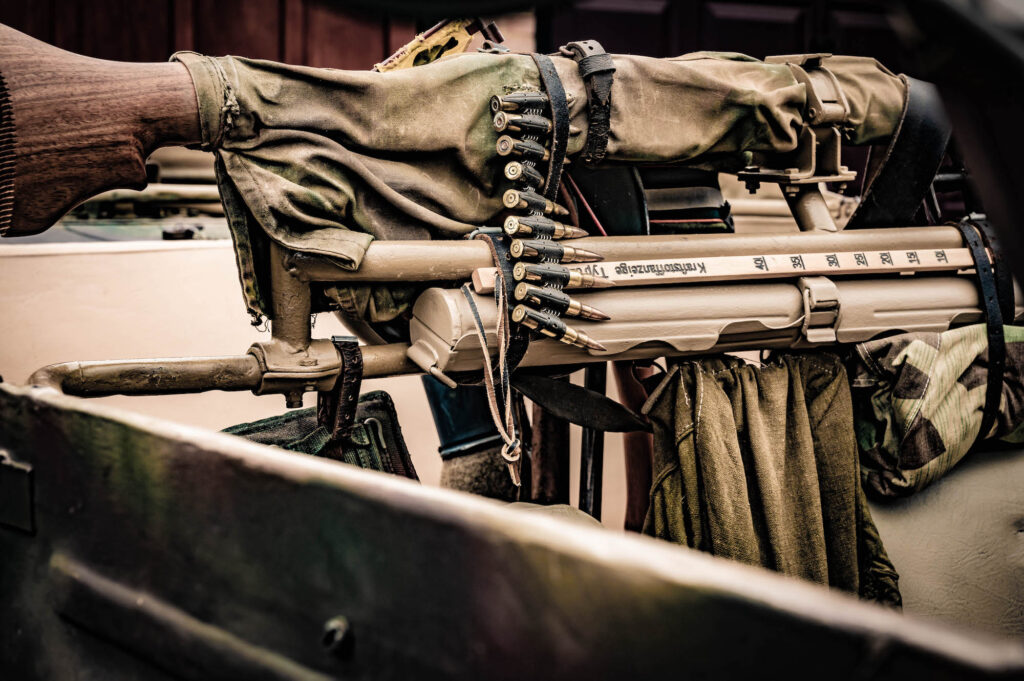
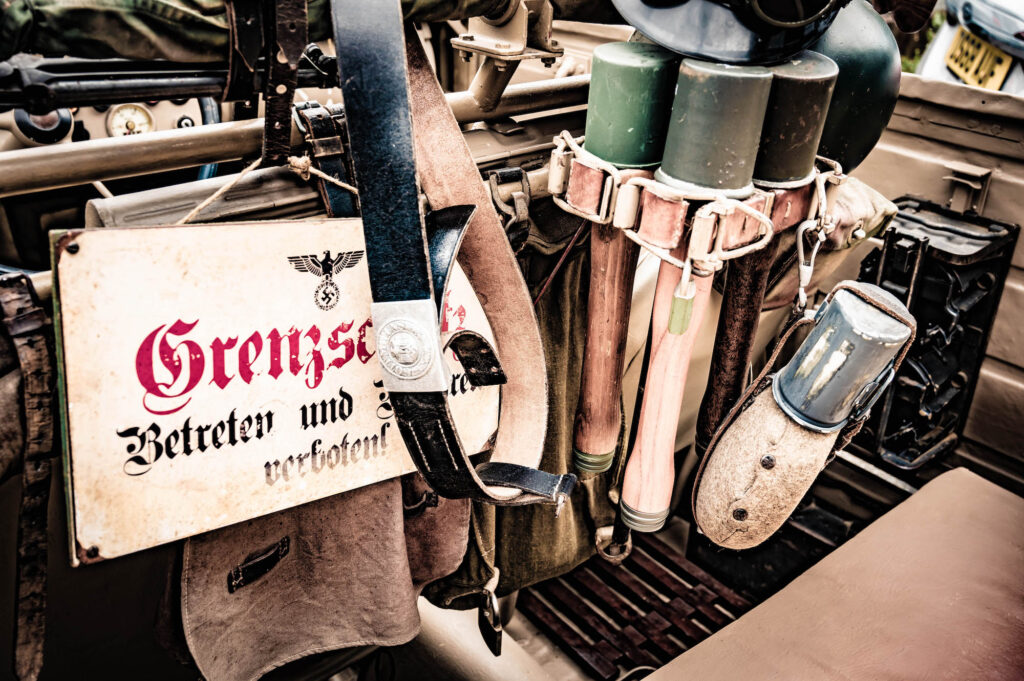
There are Swastikas
And yes, there are Swastikas.
“It’s got Swastikas on it because it had Swastikas on it,” says Graham, “and in this country we’re allowed to have them. In Germany, France, or Holland, no chance. But that’s what we fought for, wasn’t it, that freedom?”
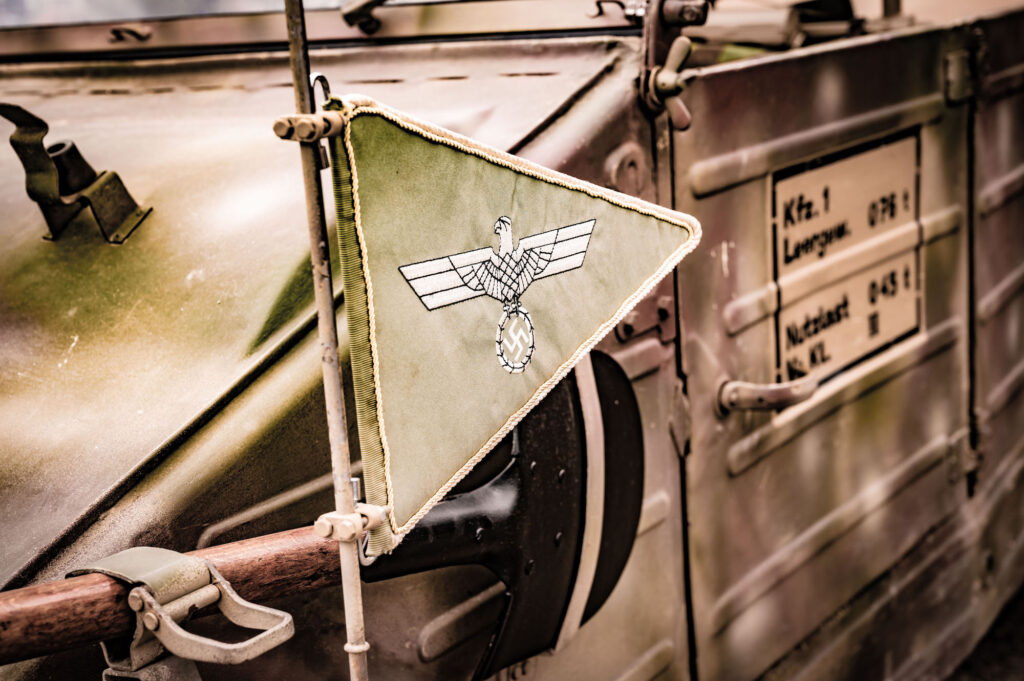
The guns have caused the odd issue over the years, although the MG34 has since been replaced by a replica after the EU outlawed so-called “defectively deactivated” weapons – that is, those that are not completely welded up so there are no moving parts.
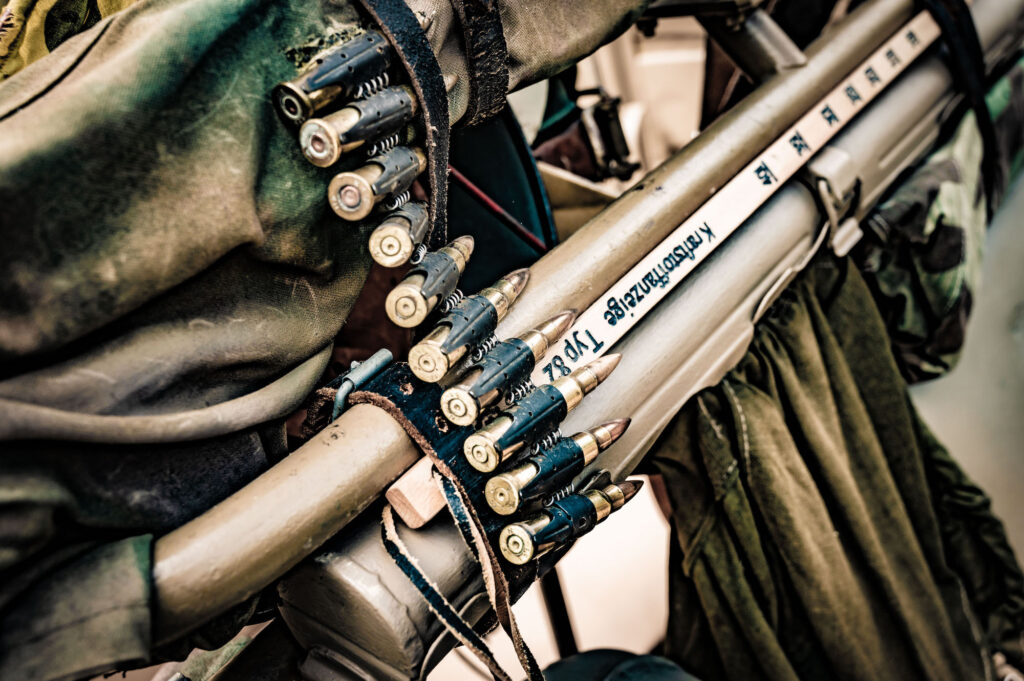
“Someone called the police on me once for driving around Benfleet with a machine gun,” Graham says. “They came round a few days later, so they couldn’t have been too concerned, and they were fine with it.”
He originally painted the Kübel in the sand colour in which they all left the factory after 1943, but later switched to a Normandy-style camouflage.
“None of these vehicles in the field looked the same,” he says. “They were done in the field with what they had – paint was very scarce, so they would thin it down with petrol.
“In the snow they’d whitewash them and in places like Italy they’d daub them in mud, which would stick and stay there forever.”
Military re-enactment shows
Three or four times a year up to 2008, Graham would take the Kübelwagen to military re-enactment shows for a week at a time, where he would engage in mock battles with Allied forces.
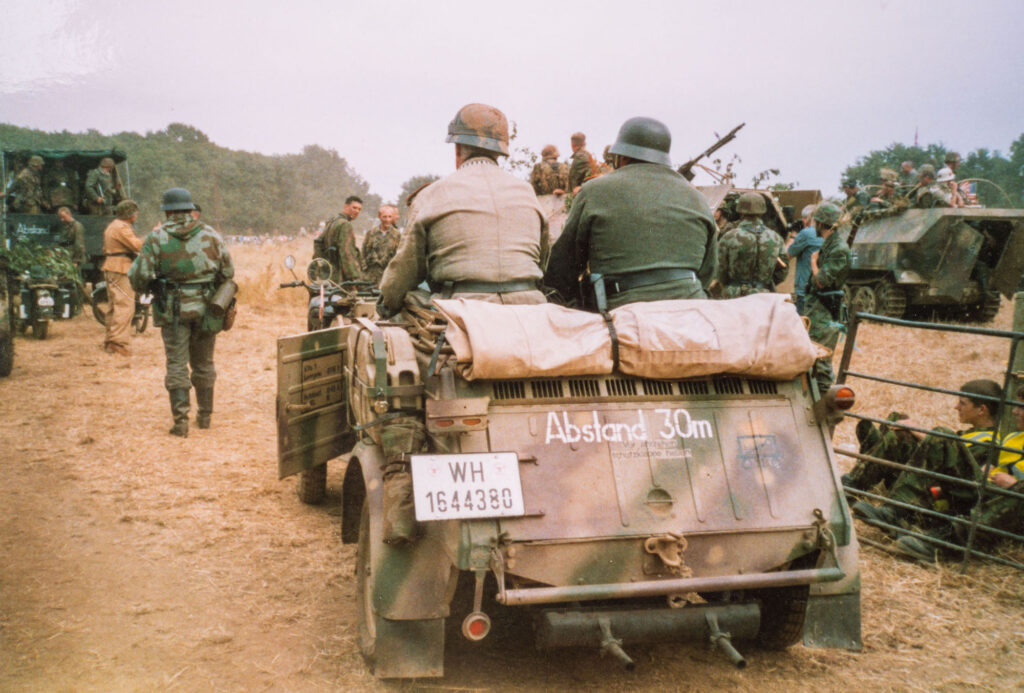
“This has been fired at more since I’ve had it than during the war,” he says. “The War and Peace Show is held in a huge great bowl, and the audience sit on the banks all the way round.
“The Allies are down one end, the Germans at the other end. We’ve got everything – half tracks, anti-tank guns, motorbikes, ambulances, and troops.
“I remember once a half track went round and the passenger had a battery on his lap. Two Allied commandos pop out with a Bazooka and fire on it, and the passenger connects the terminals and the front of this half track explodes.
“The first guy out only has one leg in real life, so they threw out a dummy leg and this guy has hopped around and fallen over. The crowd are going – ‘they’ve blown his leg off!’
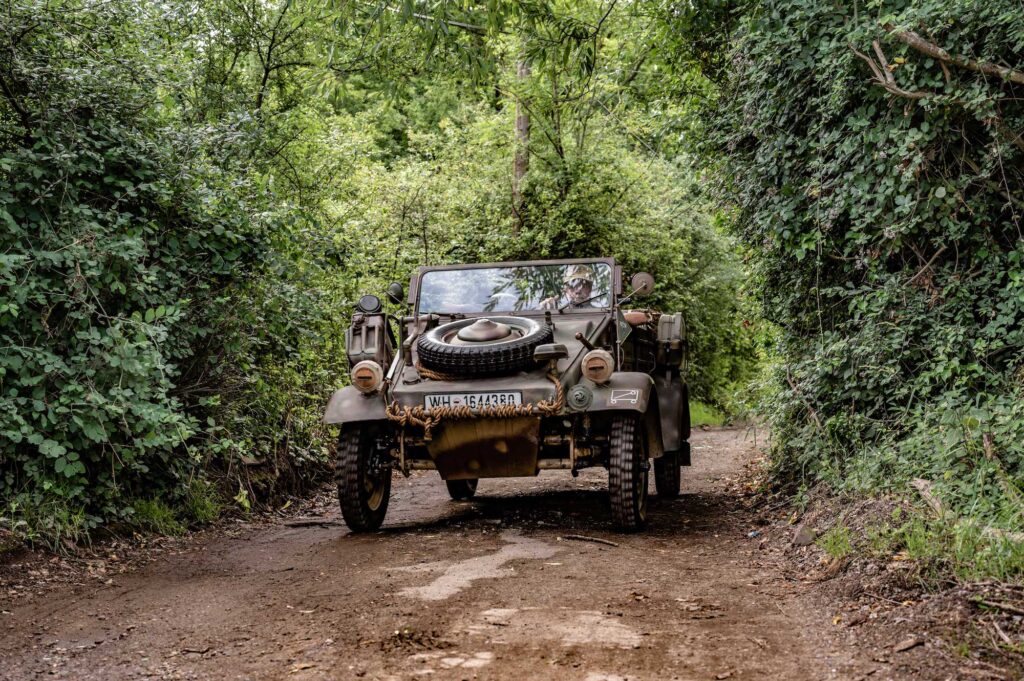
“I don’t do any of that now. These days it’s a bit of weekend fun. Me and the wife go out in it, or I just go out on my own when I fancy a drive. If it’s a nice day, I’ll go off for miles on my own.”
Because of the scarcity of the cars, they are always in demand for film and TV work, and Graham’s Kübel appeared on the History Channel to recreate a remarkable war-time drama.
“They were recreating a scene where the British Special Operations Executive dropped two agents into France,” he says. “They were in civilian clothes and coming through the woods when they heard a car coming. They came out of the woods, started thumbing a lift and round the corner came a Kübel with a driver and two senior German officers.
“They couldn’t run back in the woods, so had to blag it out, and they ended up giving them a lift to the nearest town.”
Kübelwagen engine change
After running the car on the original engine for many years, Graham decided to switch to a 1200cc unit from a 1960s Beetle just prior to the Covid pandemic.
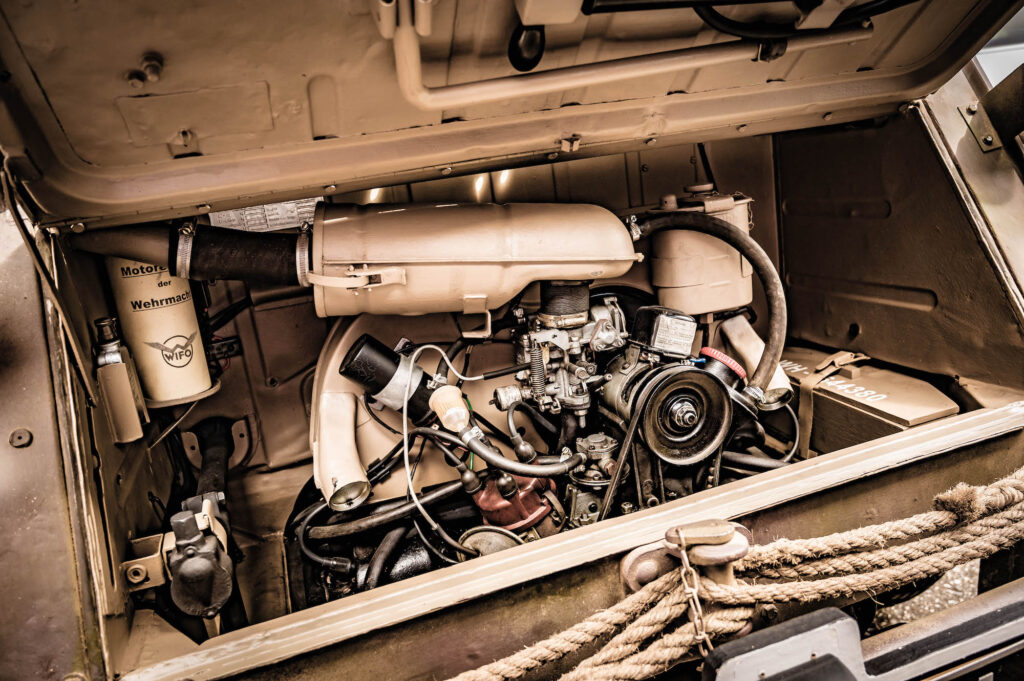
“It was when they went unleaded only at the pumps that I decided to change it,” he says. “You could buy additives and things, but I thought ‘well, it’s probably time to retire the engine’, but I’ve still got it because it’s got the original engine number starting with a 2 followed by a dash.
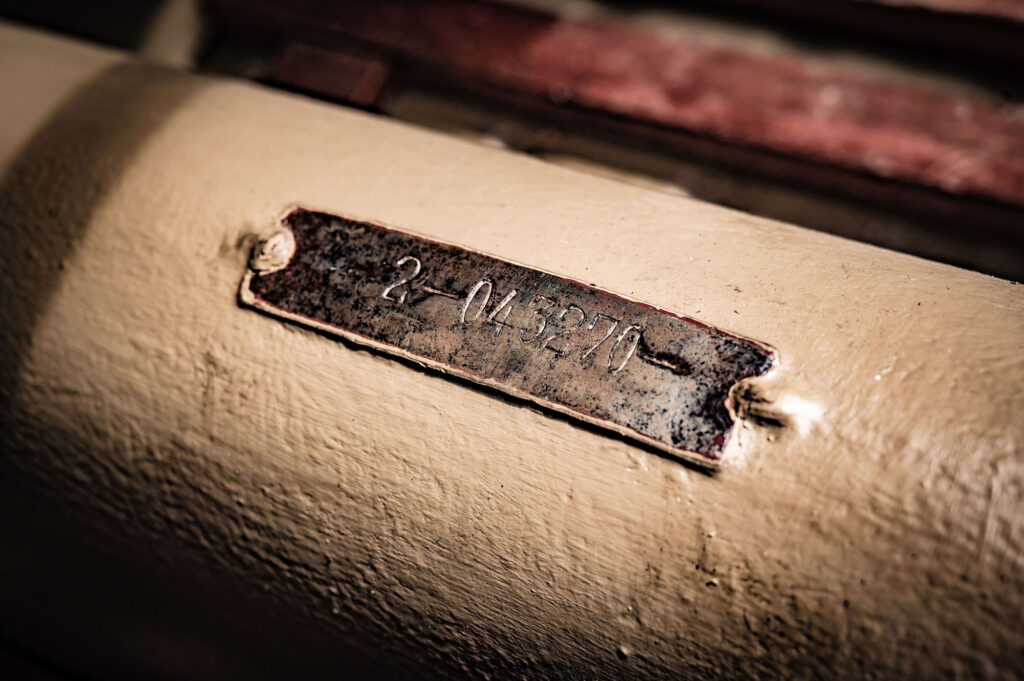
“Sixties Beetle engines are easy to come by, but the one I bought originally developed a crack and I couldn’t get it repaired, so I bought a 12-volt engine and converted it to 6-volt, but I’ve retained the tinwear from the original engine.”
So what sort of reaction does he get when he’s out and about on the roads around south east Essex?
“People at bus stops and walking along will always look,” says Graham, a retired senior construction site manager. “It will always get a reaction and, even though I could understand that people don’t like Swastikas, I’ve never had any grief.
“A couple of weeks ago we went to Southend seafront on a baking hot Sunday afternoon and the place was heaving. It took us getting on for 40 minutes to get along the Golden Mile because the traffic was just crawling along. One guy said ‘we need you out in Ukraine’.”
Always smiling
Leafing through some old photo albums, Graham notes that he’s always got a smile on his face when behind the wheel of the wartime survivor.
“When I come back from a drive, you can see that I’m always smiling,” he says.
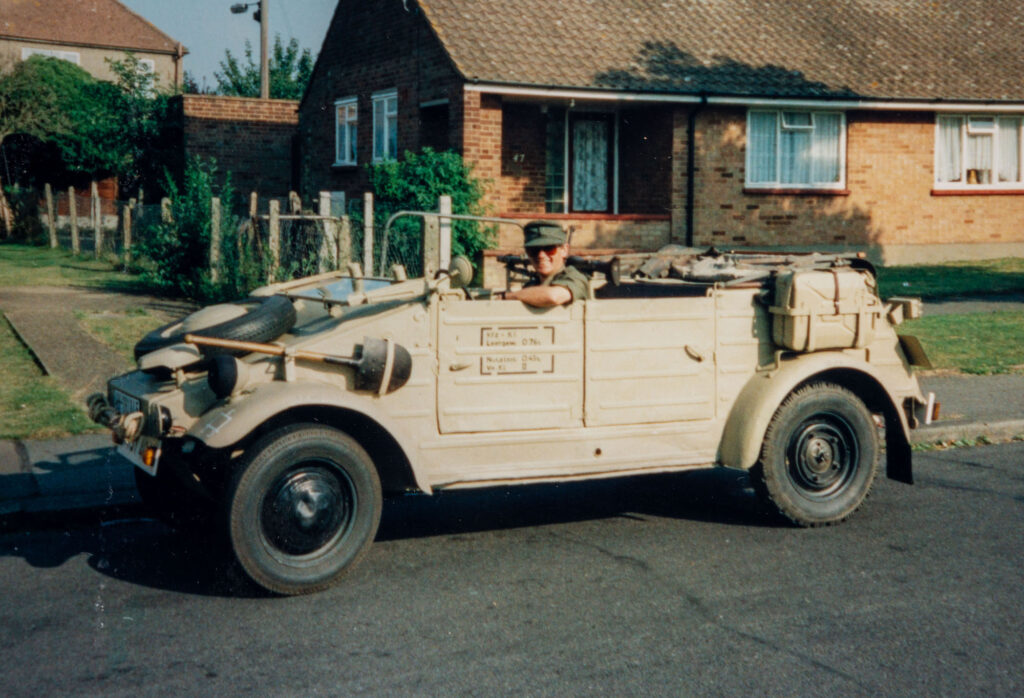
But, as time passes and the traffic increases, he admits it’s “not quite as much fun as it was” in certain circumstances.
“It’s rubbish to drive,” he laughs, “it really is. The brakes are rubbish, there’s no synchro, no power steering, and in the rain it’s terrible.
“Being left hand drive, if you’ve got the hood up, you’ve got no vision at all, absolutely none, but if you’re aware of what it does, and what it’s capable of, it’s the greatest of fun.
“I have to be very aware of my stopping distances. And be very aware, if you’re on a dual carriageway, because I’ve had occasions where cars have come alongside me, looked, pulled in front and then jammed their anchors on, looking in the mirror – and I’m standing on my brakes”
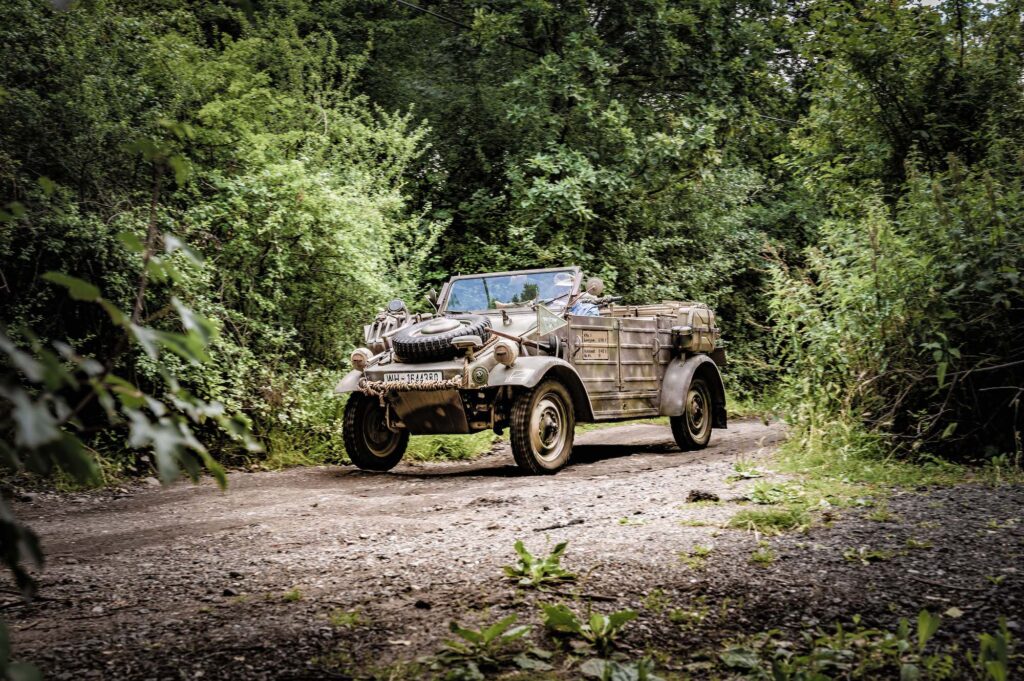
Graham would rather not think too much about the future, but he plans on driving the Kübel for as long as he can, and will attend a military vehicle show run by the Essex HMVA at Rettendon, near Chelmsford, in August.
“I’m still fairly active and, while the vehicle’s got value, I don’t need that value at the moment,” he says, wife Janet just as keen for him to keep the 79-year-old vehicle he’s brought back from the brink.
“Janet’s the one who encourages me to go out in it. I’ve often said to her ‘don’t you think we ought to change it for something a bit more practical, get a classic car or something?’ but she says ‘no, it’s your car, it’s what you wanted’.”
Shrewd investment
The Kübelwagen has also proved a shrewd investment, that initial £6,250 purchase price now looking good value given prices range anywhere from £40,000 to £65,000.
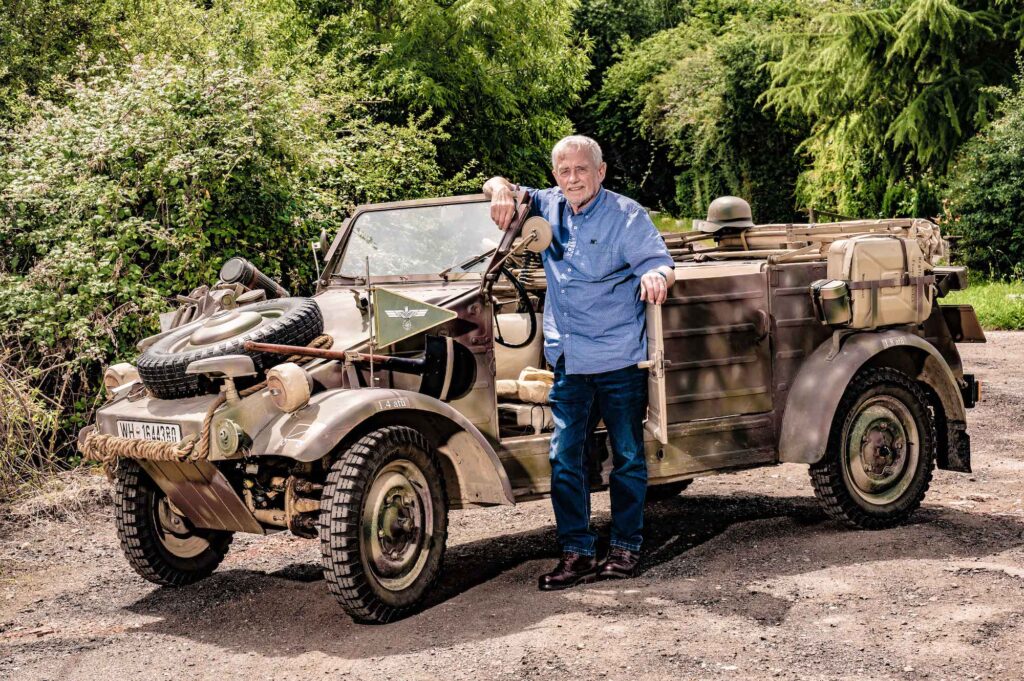
“I’m not saying that’s a £65,000 car, because it’s had a hard life, but as an investment it’s done fantastic,” he says. “Every year when I reinsure, I have to up the value a bit, and it’s currently at £42,000.
“People would look at that and say ‘that’s a £40,000 car?’ But Jeeps are now going for over £20,000, and I belong to various internet groups and guys are looking out for these all the time – whether it’s people in America, Germany, Holland.
“I’ve tried to find out how many there are, but I don’t know – it could be 100, it could be 30.”
But despite the global demand, this particular Kübelwagen won’t be leaving Essex any time soon.
As for Graham’s model collection – they’re all now stored away in the loft.
“I’ve got no need for them; they’re my past now,” he says, with the real thing parked on the drive outside.
